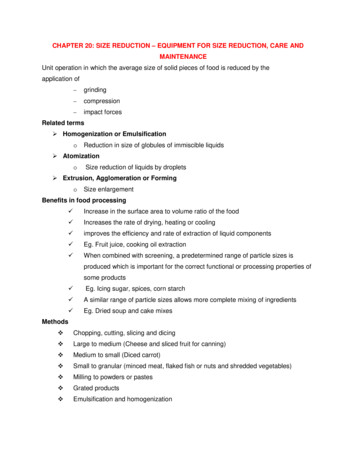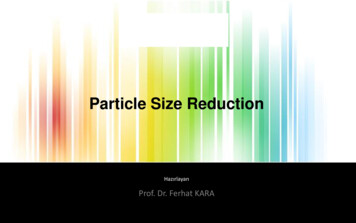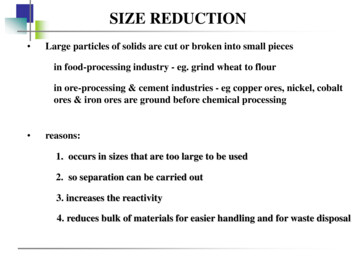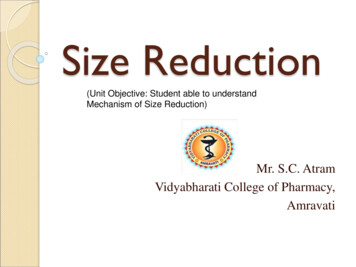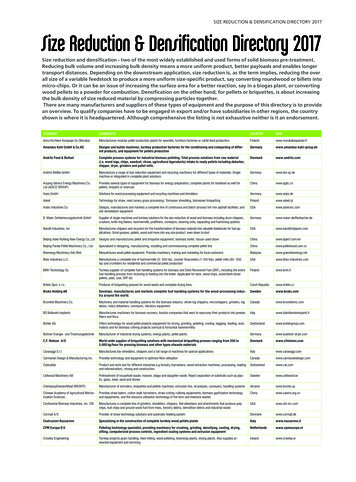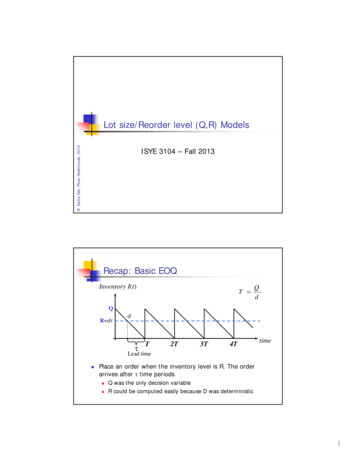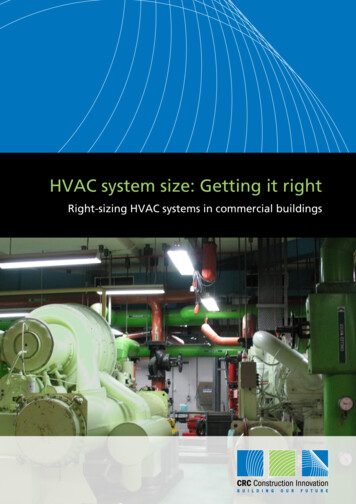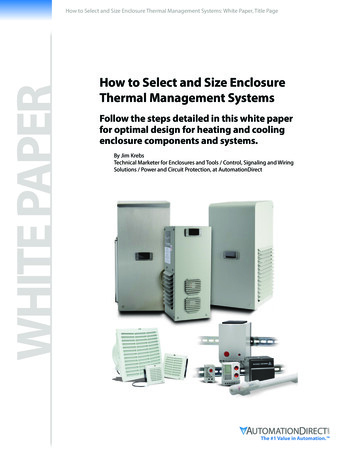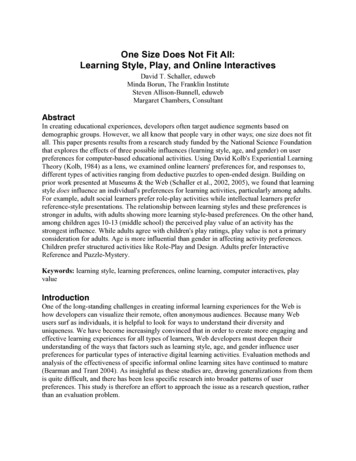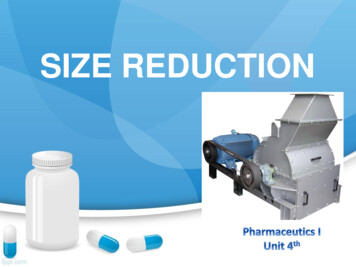
Transcription
SIZE REDUCTION
CONTENTS
SIZE REDUCTION
MOST IMP GTU QUESTIONTHEORIES OF SIZE REDUCTION / MILLING A number of theories have been proposed toestablish a relationship between energy inputand the degree of size reduction produced. Rittinger’s theory : Bond’s theory Kick’s theory Walker’s theory
Rittinger’s theoryRittinger’s theory suggests that energy required in asize reduction process is proportional to the newsurface area produced.where, E energy required for size reductionKR Rittinger’s constantSi initial specific surface areaSn final specific surface areaApplication: It is most applicable in size reducing brittlematerials undergoing fine milling.
Bond’s theory Bond’s theory states that the energy used in crackpropagation is proportional to the new crack length produced. where, E energy required f or size reductionKB Bond’s work indexdi initial diameter of particlesdn final diameter of particlesApplication: This law is useful in rough mill sizing. The workindex is useful in comparing the efficiency of millingoperations.
Kick’s theory Kick’s theory states that the energy used in deforming (orfracturing) a set of particles of equivalent shape isproportional to the ratio of change of size/diameter where, E energy required for size reductionKK Kick’s constantdi initial diameter of particlesdn final diameter of particles Application: For crushing of large particles Kick’s theory mostuseful.
Walker’s theory Walker proposed a generalized differential form of the energy-sizerelationship: Where E amount of energy (work done) required to produce a changeD size of unit massK Constantn constantForn 1.0 Walker equation becomes Kick’s theoryIt is used for coarse particles 1 um.n 1.5 Walker equation becomes Bond’s theory.This theory is used when neither Kick’s nor Rittinger’s law is applicable.n 2.0 Walker equation becomes Rittinger’s theoryUsed for fine particles 1 um size.
VARIOUSEQUIPMENTS USEIN SIZE REDUCTION
ADVANTAGES OF HAMMER MILL It is rapid in action, and is capable of grinding manydifferent types of materials. They are easy to install and operate, the operationis continuous. There is little contamination of the product withmetal abraded from the mill as no surface moveagainst each other. The particle size of the material to be reduced canbe easily controlled by changing the speed of therotor, hammer type, shape and size of the screen.
DISADVANTAGES Heat buildup during milling is more,therefore, product degradation is possible. Hammer mills cannot be employed to millsticky, fibrous and hard materials. The screens may get clogged. Wearing of milland screen is more with abrasive materials.
BALL MILL These are also knows as tumbling mills. Principle: The ball mill works on the principle ofimpact between the rapidly moving balls and thepowder material, both enclosed in a hollow cylinder. At low speeds, the ball roll over each other andattrition (rubbing action) will be the predominatemode of action. Thus, in the ball mill, impact orattrition or both are responsible for the sizereduction.
Advantages: It can produce very fine powder. Ball mill is used for both wet and dry grindingprocesses. Toxic substances can be ground, as the cylinder isclosed system. Rod or bars can also be used as grinding media. (example: Sticky material are size reduced) In ball mill, installation, operation and labour costs are low.
Disadvantages: The ball mill is a very noisy machine. Ball mill is a slow process. Soft, tacky, fibrous material cannot be milledby ball mill.
ROLLER MILL
ROLLER MILL
ROLLER MILL
Colloidal Mill
size reduction process is proportional to the new surface area produced. where, E energy required for size reduction KR Rittinger’s constant Si initial
